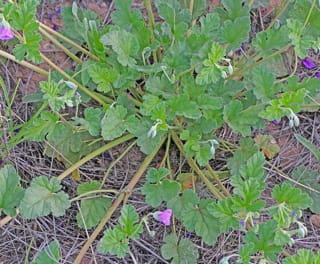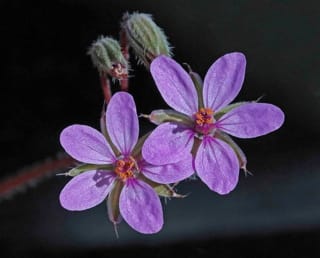This guide initially displays all weeds in the Los Alamos area classified in NM as noxious regardless of shape. Use the selectors below to include nonclassified weeds or select a specific set, either by shape or name.
The term weed is commonly used to denote a plant that is growing in an area where it is not valued. It is officially defined by the USDA Animal and Plant Health Inspection Service as being any plant that poses a threat to agriculture and/or a natural ecosystem. A noxious weed is one that is particularly troublesome and can directly or indirectly injure or cause damage to crops, livestock, or natural resources.
In general, plants that are within their native range live in balance with their environment and are not typically considered to be weeds. Issues can occur, however, if a plant is introduced, either directly or indirectly, to a new ecosystem. These, now non-native plants, may be able to thrive in their new environment. If so, these naturalized plants can fall into one or two categories long term: (1) plants that are valued for their flowers and fruit and (2) plants that are rapidly considered to be weeds. The plants in the latter category are those that are generally regarded as noxious weeds.
While some species shown here are included in the PEEC Flower and Tree Guides, this guide concentrates on some of the nastier introduced species that you might see in your yard or on local trails. In addition, this guide includes some native plants that meet the general definition of weed.
Weed References
A Plan For the Control of Invasive Species on Los Alamos County Open Space — Craig Martin [PDF]
Los Alamos Master Garden Weed List
NMSU Weed Information
SEINet: Southwest Biodiversity
Some Common Lawn and Garden Weeds of Los Alamos, NM — Dorothy Hoard and Teralene Foxx [PDF]
Troublesome Weeds of NM
USDA: Introduced, Invasive, and Noxious Plants
Weed Alert
Weeds of the Los Alamos Area — Teralene Foxx [PDF]
Subject Area Experts (all guides)
Steve Cary (butterflies)
Beth Cortright (insects)
Terry Foxx (invasive plants)
Leslie Hansen (mammals)
Richard Hansen (fish, mammals)
Dorothy Hoard (butterflies, trees)
Chick Keller (flowers, herbarium)
Shari Kelley (geology)
Kirt Kempter (geology)
Garth Tietjen (reptiles)
David Yeamans (birds)
Web Development and Content Management
Pat Bacha
Jennifer Macke
Graham Mark
Akkana Peck
Contact
Please contact us for local nature questions and sightings. We welcome comments, corrections, and additions to our guides.
For more information about local nature, please visit our Nature Blog or subscribe to PEEC This Week.
Make Selection
 Photo: Jerry Oldenettel  Photo: Jerry Oldenettel  Photo: Jerry Oldenettel |  Redstem Stork's Bill, Redstem Filaree, Common Stork's Bill, Heron's BillERCI6 (Erodium cicutarium)Family: Geranuaceae (Geraniums) Size: up to 15 in (38 cm) Growth: forb/herb; annual, perennial Status: non-native; nonclassified Native Range: Eurasia and north Africa NM Noxious Weed Class: not classified Habitat: fields, gardens, yards, and roadsides Control Notes: burning increases growth following year; manual removal before fruit development effective; herbicides at seedling stage efficacious Redstem Stork's Bill was accidentally introduced to North America by Spanish explorers in the early 18th century. By the time that the earliest missions in California were established later in the century, Erodium cicutarium was well established in the area. The plant has been known to become the dominant cover in rangelands, outcompeting other plant species and only providing palatable forage in the spring when young. It can reduce crop yields as well and devalue wool from sheep raised on infected pasture. While numerous Western states have placed Redstem Stork's Bill on their list of general weeds; Colorado has listed it specifically as a noxious weed. Redstem Stork's Bill is a hairy, sticky plant with pointed leaves. It has clusters of bright, tiny, pink flowers, each with five petals and dark spots on the base. The fruit consists of a very long seed pod that is shaped like a stork’s bill giving the plant some of its common names. When the fruit dries out, it splits open explosively sending seeds in all directions. Once the seeds touch ground, they change shape in response to humidity which propels the seeds into the ground. The entire plant is edible when young, tasting similar to parsley. The flowers are a good source of nectar and pollen. While the seeds are eaten by variety of animals and birds. Lastly, the Zuni have used a poultice of the chewed root to treat sores and rashes. Info Photos Distribution Flower Guide |
